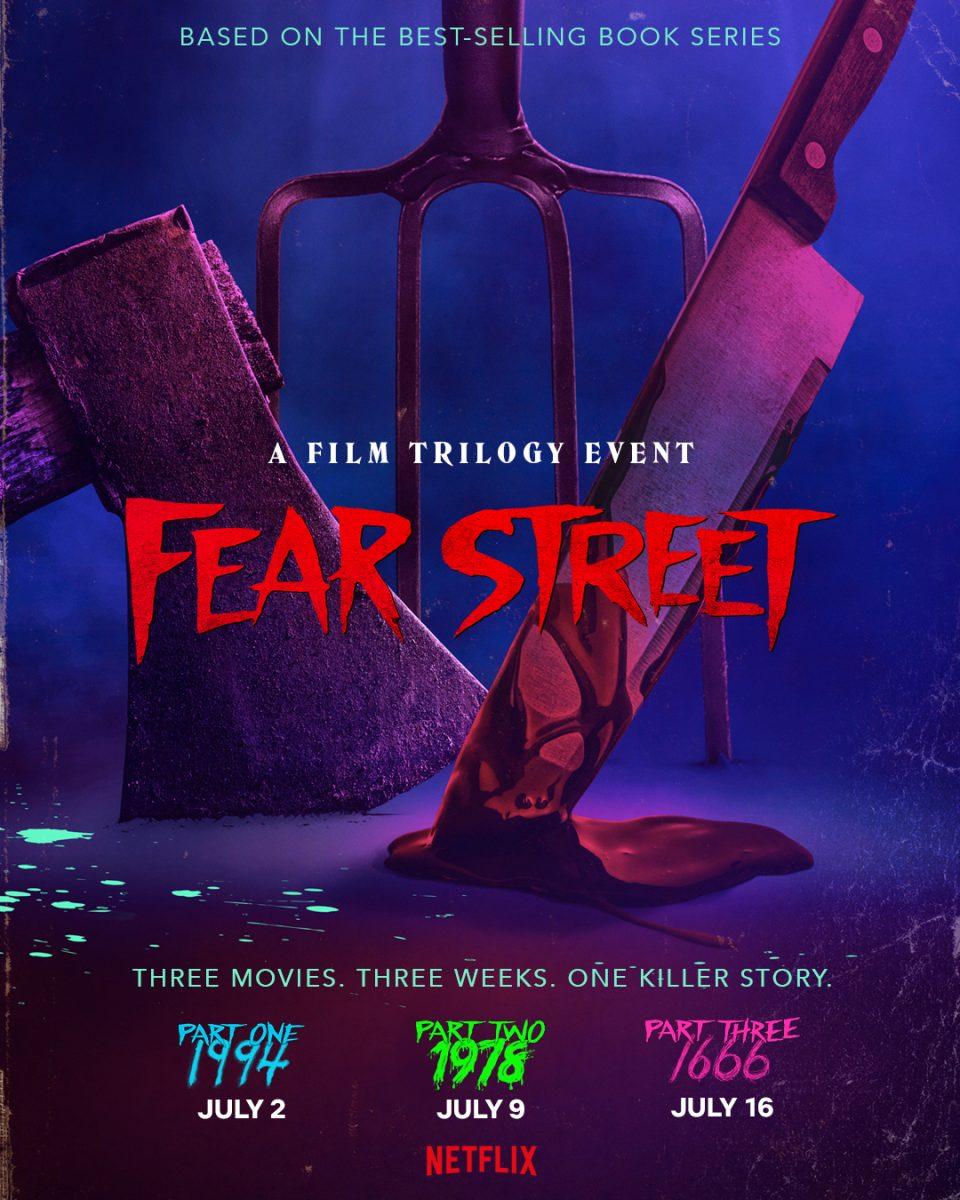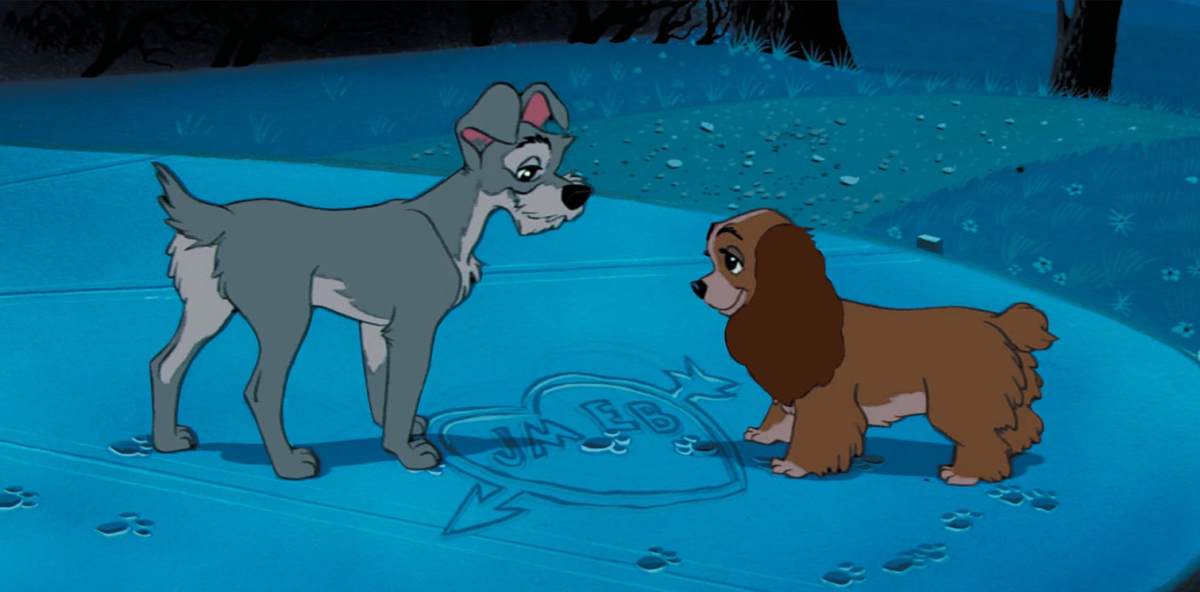The “Fear Street” trilogy was written in the 80s by R.L. Stine and inspired the Netflix Original adaptations, all released in the span of three weeks. A complete movie trilogy that premiered and concluded all in one year. The films directed by Leigh Janiak follow a teenage horror storyline that encompasses 300 years’ worth of history and character building with every consecutive movie, adding more characters and clarity to the curse at hand.
“Fear Street Part One: 1994”
Landing right in the middle of the horror genre, Part One doesn’t hesitate, diving right into the jump scares and setting a suspenseful tone. Off to a running start, the film utilizes music to its advantage and lays the groundwork for the mood of each scene. Since each of the three films follow one extended storyline in different time periods, nailing each aesthetic is important, and Part One grasped the full effect of the 90s.
Part One goes against the grain from the start by introducing a strong, fearless, female protagonist Deena, played by Kiana Madeira, whose character is also a part of the LGBTQIA+ community. This film is a fitting introduction for the movies that follow, focusing on the plot and not overwhelming the film with gore. The teen drama, on the other hand, can feel a bit overwhelming or unnecessary at times throughout the film. Some parts could have avoided the obvious hints that lead to a scary scene.
The casting was well done for Part One, seeing as the actors appear in all three films. Starting off with interesting characters and their high-quality acting sets the trilogy up for success. The characters themselves have great chemistry in their interactions with each other and make for great entertainment.
“Fear Street Part Two: 1978”
Out of all three “Fear Street” films, Part Two knocks the ball out of the park by piecing together great character arcs, iconic 70s camp retreat horror and even familial relationship issues. Part Two kicks off right where Part One left off, and for an interesting twist, this trilogy’s storyline pedals backward. Unexpectedly, Part Two’s plot is more interesting than Part One, which is atypical for sequels to outdo their predecessor.
The late 70s aesthetic is what makes this film significantly better than the first. Set in the haunted town of Shadyside during the summer, the story follows Ziggy Verman, played by Sadie Sink, at camp and her horrific discoveries. A familiar face, Sadie Sink gives a fantastic acting performance and played a major role in making this film stand out in the trilogy. Knowing her from her role as Max in Stranger Things makes it enjoyable to see her back in the same time frame as this new character she tackles in “Fear Street”.
Sink’s energetic spunk makes for an interesting watch in Part Two. “Cherry Bomb” by The Runaways and other popular songs from the era give this movie a more lively feel than the others, which makes it just a little more fun to watch.
“Fear Street Part Three: 1666”
Part Three has different intentions than the first two films in the trilogy. This film is primarily focused on closing the story and seeing everything come full circle. The plot has some new information so it still holds an eerily scary tone despite the audience members knowing what it leads to. This film has fewer jump scares and more explanation as to why all this violent terror has plagued this town for 300 years. The real horror is not blatantly obvious in this film. Although not as scary, it does bring emotions of frustration and understanding.
The majority of Part Three is a flashback, with Madeira playing Sarah Fier, a prominent character throughout the trilogy who was hung for witchcraft in 1666. Seeing through Fier’s perspective, the story is riveting and some of the acts on screen are vicious. Madeira does a fantastic job of playing her character Deena but also portraying Fier for most of Part Three. Part Three was a great full-circle ending to the trilogy of films, but it turns out to be a different ending than most might expect.
Final Thoughts
Since all three of the films were released within three weeks, it creates more consistency in the actor’s age and magnifies the entertainment. Typically, movies do not follow a story throughout the span of three days because the actors and actresses age, but this trilogy pulled off the story. The films were also released at an odd point during the summer, and while great films, they would have been a better hit if released around Halloween or during fall.
The “Fear Street” trilogy has a chilling, epic storyline geared toward the teenage demographic and is enjoyable to watch. It is not the kind of trilogy that explores terrifying aspects like “The Conjuring” but is still a good go-to trilogy to watch around Halloween this fall.










